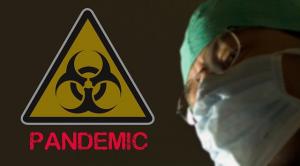A phenomenon called 'silent hypoxemia' or 'happy hypoxia' is reported in COVID-19 patients. A new study suggests that it can be explained by the existing knowledge of respiratory physiology.
Hypoxemia is a condition where there will be a decrease in the partial pressure of oxygen in the blood. As the blood oxygen levels reduce, one may feel shortness of breath (or dyspnea). If this continues for long, the organs may shut down and pose threat to life.
According to existing evidence, this phenomenon in COVID-19 patients is weird. Because despite low blood oxygen levels, patients appeared well with no serious issues like even shortness of breath and that baffled the experts. This became known as happy hypoxia or silent hypoxemia.

The new study attempts to solve the mystery, which many see as "defying basic biology," and might help physicians to better understand and treat COVID-19 patients.
Dr. Martin J. Tobin and colleagues explained this phenomenon using "long-established principles of respiratory physiology," after they conducted an informal survey of 58 healthcare workers, asking them if they encountered any such. They received 22 responses with which they analyzed the case, published in the American Journal of Respiratory and Critical Care Medicine.
Explainer
Speaking about measuring oxygen levels with a pulse oximeter, Dr. Tobin points out that even though the device is accurate when oxygen readings are high, it "markedly exaggerates the severity of low levels of oxygen when readings are low," reported Medical News Today.
He also notes that the brain might not immediately recognize the reduction of blood oxygen levels in COVID-19 patients. "The brain does not respond until oxygen falls to very low levels," until a patient becomes short of breath, he explained.

He also explained that over 50 percent of the patients with happy hypoxia had low carbon dioxide levels, and the researchers believe that it could reduce the effect of low blood oxygen levels.
Peculiar Action of Coronavirus
Dr. Tobin said that the coronavirus might be "exerting a peculiar action on how the body senses low levels of oxygen." He speculated it could also be linked to the lack of smell that a COVID-19 patient experiences as a symptom of the novel coronavirus infection.
He also believes that using real-time data can guide future treatments, while the research paper could prove crucial in reducing COVID-19 deaths. This includes avoiding unnecessary intubation for mechanical ventilation among other treatments, according to Dr. Tobin. On top of all this, much research is also needed, he said.









